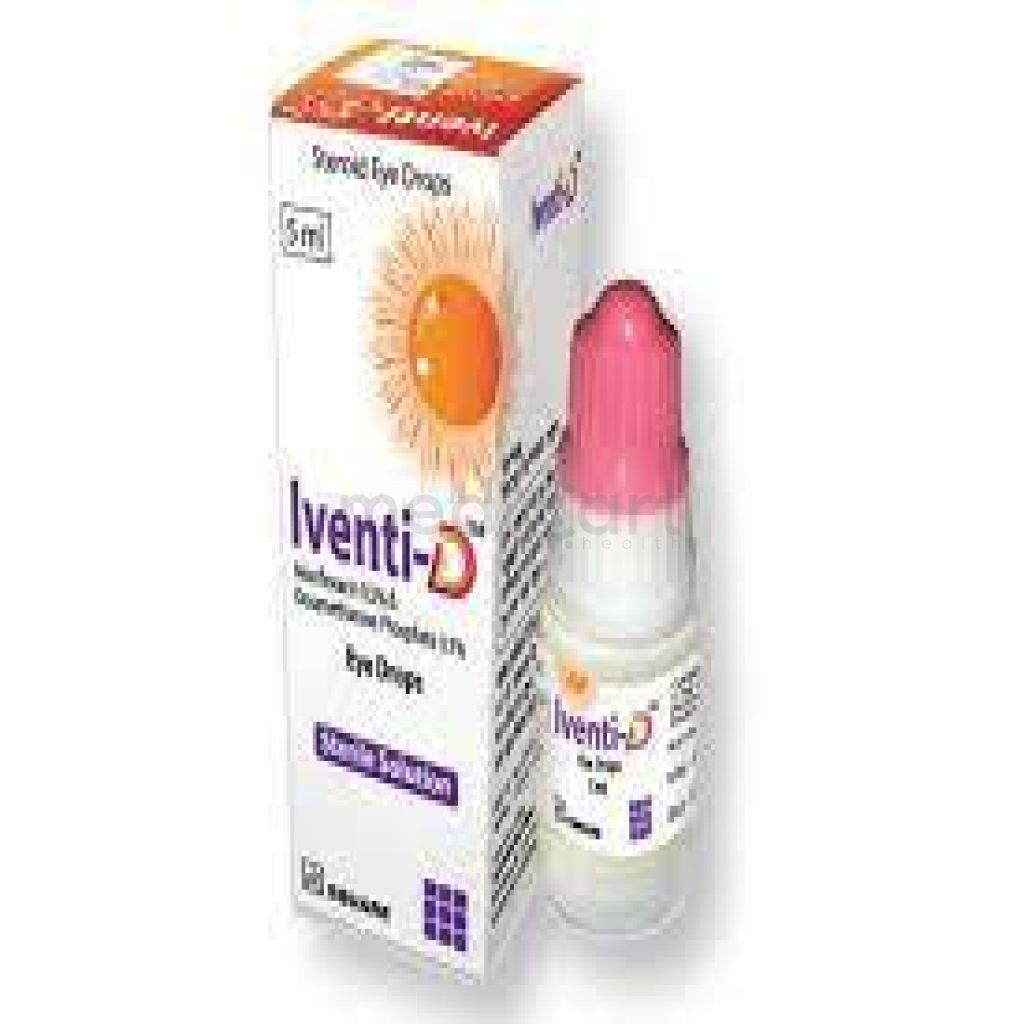

Visomox D 100/500/100 ml Eye Drops - _0.3%
Ophthalmic Solution
Pack Size :
1 Bottle x 1 Packet
Generics :
Dexamethasone + Moxifloxacin eye prep
Manufacturer :
Eskayef Pharmaceuticals Ltd.
Best Price *
TK
200.00
* Delivery will be done in Dhaka city only.
More Information About - Visomox D 100/500/100 ml Eye Drops - _0.3%
Description
Generic Name
Moxifloxacin 0.5% Eye prepPrecaution
As with other anti-infectives, prolonged use may result in overgrowth of non-susceptible organisms, including fungi. If superinfection occurs, discontinue use and institute alternative therapy. To prevent contamination do not touch the tip of the dropper to eye, eyelid or any surface of of the affected eye. Keep the bottle tightly closed after use. Lactation: Unknown whether drug is excreted in breast milk; use with cautionIndication
Bacterial Conjunctivitis. This drug is indicated to increase tear production in patients whose tear production is suppressed due to ocular inflammation associated with dry eye syndrome (keratoconjunctivitis sicca).Contra Indication
Patients with a history of hypersensitivity to Moxifloxacin, to other Quinolones or to any of the components in this medicationDose
N/ASide Effect
1-10% Conjunctivitis,Dry eye,Fever,Increased cough,Infection,Ocular discomfort,Ocular hyperemia,Ocular pain,Ocular pruritus,Otitis media.Pharyngitis,Rash,Rhinitis,Subconjunctival hemorrhage.TearingPregnancy Category
Name : Not Classified
Description
FDA has not yet classified the drug into a specified pregnancy category.Mode of Action
Moxifloxacin inhibits the topoisomerase II (DNA gyrase) and topoisomerase IV required for bacterial DNA replication, transcription, repair and recombination.Interaction
Additive effect on QT interval prolongation w/ other drugs that prolong QT interval (e.g. erythromycin, TCAs, antipsychotic agents). Decreased absorption and bioavailability w/ Al- or Mg-containing antacids, or Fe or Zn preparations. Concomitant use of corticosteroids increases the risk of severe tendon disorders esp in elderly (>60 yr). Decreased absorption w/ sucralfate or didanosine. Potentially Fatal: Concurrent use of class Ia (e.g. quinidine, procainamide) or III (e.g. amiodarone, sotalol) antiarrhythmic drugs or w/ other drugs that prolong QT interval (e.g. erythromycin, TCAs, antipsychotic agents) may cause additive effect on QT interval prolongation.Pregnancy Category Note
Pregnancy There are no available human data establishing a drug associated risk; however, when moxifloxacin was administered to rats during pregnancy and throughout lactation at doses associated with maternal toxicity, decreased neonatal body weights, increased incidence of skeletal variations (rib and vertebra combined), and increased fetal loss were observed Advise pregnant women of potential risk to fetus Lactation Not known if moxifloxacin is present in human milk Based on animal studies in rats, moxifloxacin may be excreted in human milk Developmental and health benefits of breastfeeding should be considered along with mother?s clinical need for therapy and any potential adverse effects on the breastfed child from drug or from the underlying maternal conditionAdult Dose
Ophthalmic Bacterial conjunctivitis Adult: As 0.5% soln: Instill 1 drop into the affected eye(s) bid-tid for 7 days. It can be used concomitantly with artificial tears, allowing a 15 minute interval between products.Child Dose
Ophthalmic Bacterial conjunctivitis Child: >1 yr: Instill 1 drop into the affected eye(s) tid for 7 days.Renal Dose
N/AAdministration
N/ADisclaimer
The information provided herein are for informational purposes only and not intended to be a substitute for professional medical advice, diagnosis, or treatment. Please note that this information should not be treated as a replacement for physical medical consultation or advice. Great effort has been placed to provide accurate and comprehensive data. However, Medicart along with its authors and editors make no representations or warranties and specifically disclaim all liability for any medical information provided on the site. The absence of any information and/or warning to any drug shall not be considered and assumed as an implied assurance of the Company.







